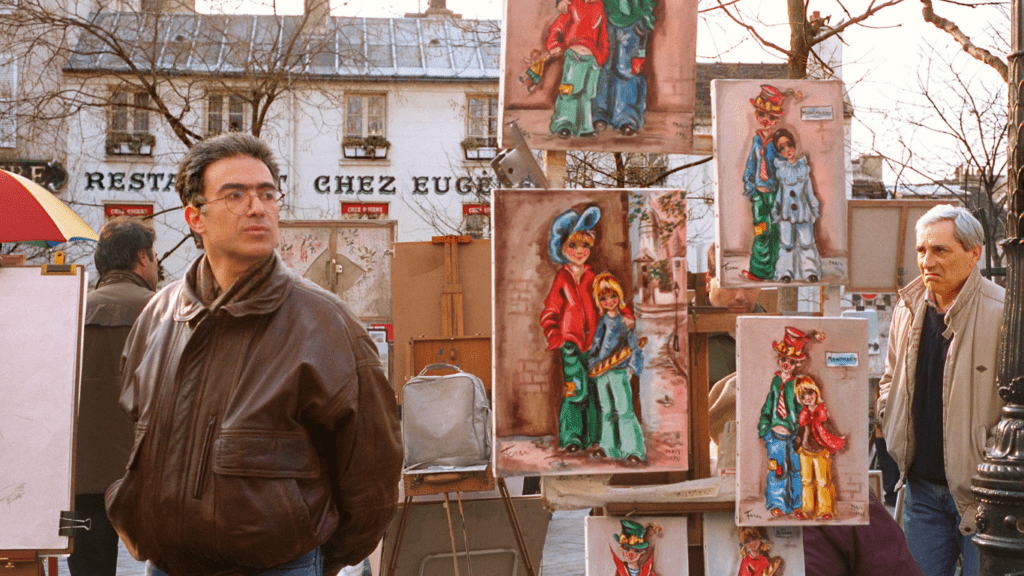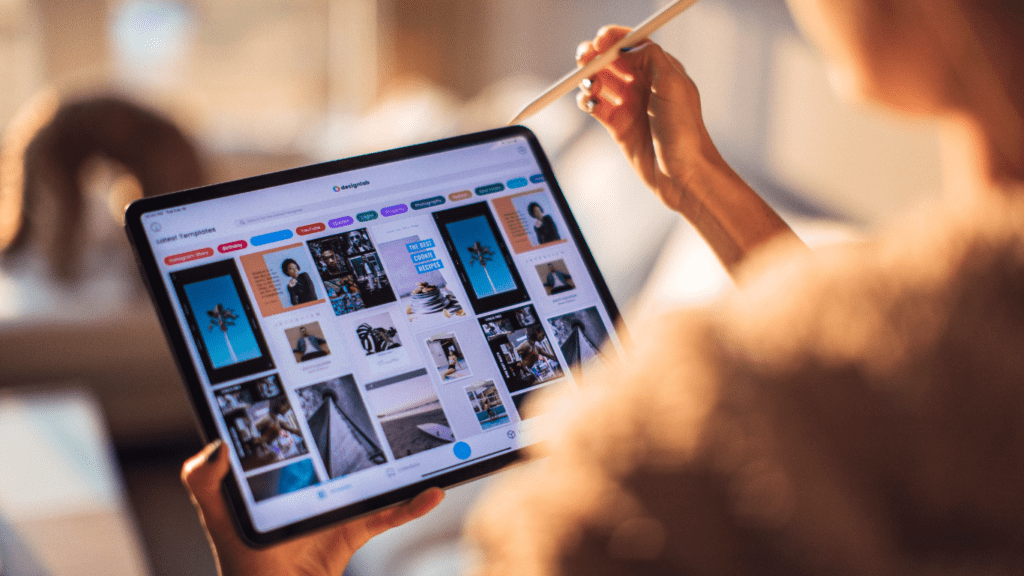The Rise of Digital Art Forms
Digital art forms have emerged, transforming how artists create and audience experiences art. These forms have become integral to contemporary art, offering endless possibilities and redefining aesthetic boundaries.
Evolution of Digital Tools
Digital tools evolved rapidly, expanding artists’ capabilities. In the 1990s, Adobe Photoshop revolutionized graphic design and digital painting. By the 2000s, tablets and styluses enabled more intricate and intuitive creations.
Today, VR and AR technologies offer immersive experiences, allowing artists to build interactive, multi-sensory installations. These advancements have not only diversified artistic techniques but also democratized access to sophisticated tools.
Profile of Leading Digital Artists
Leading digital artists showcase the potential of new technologies. Beeple, known for his digital art sold as NFTs, combines visual effects and 3D modeling to create thought-provoking pieces. Refik Anadol, using data and machine learning, transforms datasets into mesmerizing visual displays.
Another prominent figure, Trevor Paglen, explores the intersections of AI and surveillance in his work, pushing the boundaries of conceptual art. Their contributions highlight the innovative spirit driving the digital art movement.
Technological Impact on Art Techniques and Materials
Technology has profoundly impacted the art world by introducing novel techniques and materials, reshaping conventional art practices and enabling unprecedented creative possibilities.
New Materials in Sculpture and Installation
Emerging materials have revolutionized sculpture and installation art. Artists now use 3D-printed polymers, which offer precise, customizable output. Anish Kapoor’s pieces illustrate how these materials can achieve intricate detail and ambitious scale.
Additionally, nanomaterials provide durability and unique textures, as seen in Neri Oxman’s work combining organic elements with synthetics. Augmented and mixed reality installations, exemplified by artists like Olafur Eliasson, seamlessly merge digital and physical realms, creating immersive experiences that redefine spatial dynamics.
Advances in Interactive Art
Interactive art has seen significant advancements through technology. Artists use sensors and software to create responsive installations that engage audiences in real-time. Rafael Lozano-Hemmer’s works, which utilize biometric data to influence visual displays, showcase this trend.
Virtual Reality (VR) offers immersive environments where viewers interact with digital objects, as seen in the creations of Rachel Rossin. Augmented Reality (AR) overlays digital content onto real-world settings, transforming public art. Artists like Miwa Matreyek blend performance with projected visuals, creating interactive narratives that blur the lines between viewer and art.
The Convergence of Art and Virtual Reality
Virtual Reality (VR) is revolutionizing contemporary art by providing immersive environments that engage viewers in unprecedented ways. This convergence of art and VR has led to dynamic changes in how art is experienced and created.
Immersive Art Exhibitions
VR technology enables immersive art exhibitions where viewers interact with digital landscapes. For instance, artist Laurie Anderson uses VR to create emotionally engaging spaces that transport audiences.
Similarly, the Tate Modern showcases VR experiences like “Modigliani VR: The Ochre Atelier,” allowing viewers to step inside the artist’s studio. These exhibitions offer a multisensory approach, blurring boundaries between observer and participant.
Educational Opportunities in VR Art
VR also transforms art education by offering hands-on experiences in virtual environments. Institutions like the New Museum’s NEW INC incubator provide VR-centric workshops, fostering skill development in digital art forms.
VR tools like Google Tilt Brush allow students to paint in 3D space, enhancing creative expression. This democratizes access to art education, particularly in regions lacking physical resources, and nurtures a new generation of tech-savvy artists.
Technological Innovations and Public Art Displays

Technology has significantly impacted public art displays, transforming how audiences engage with and experience art. Interactive installations and new media in urban spaces showcase this influence.
Interactive Installations
Interactive installations integrate technology to create dynamic and engaging experiences.
- motion sensors
- touchscreens
- augmented reality (AR) play critical role
For instance, Rafael Lozano-Hemmer’s works often incorporate participant interactions through sensors, bringing art to life with human movement.
These installations foster a deeper connection between the audience and the artwork, making them active participants rather than passive observers. Artists achieve this by blending traditional art forms with digital elements, creating immersive experiences.
New Media in Urban Spaces
New media in urban spaces utilize technology to redefine public art. Digital billboards, projection mapping, and light installations are common examples. These media offer innovative ways to present and interact with art in public settings.
Anish Kapoor’s “Cloud Gate” in Chicago exemplifies the use of polished steel to reflect and distort the city’s skyline, merging physical artistry with technological brilliance.
These displays not only enhance urban aesthetics but also engage the public in unique ways, transforming ordinary cityscapes into dynamic art galleries. With advancements in technology, urban art has become increasingly versatile and engaging.
The Future of Art in the Digital Age
Advancements in technology continue to shape the landscape of contemporary art. As we move deeper into the digital age, both artists and audiences can expect significant transformations.
Predictions and Emerging Trends
Art will increasingly incorporate emerging technologies. For instance, blockchain technology’s integration creates verifiable digital ownership through NFTs. Artists leverage NFTs to sell digital artwork securely without intermediaries, reducing costs.
AI will play a larger role, automating design processes and enabling algorithm-driven creations. Generative art, produced through AI algorithms, will gain prevalence, pushing the boundaries of creativity.
Augmented Reality (AR) will enhance exhibitions. Museums and galleries will use AR to provide interactive experiences, overlaying digital information on physical artworks.
Challenges and Opportunities for Artists
Artists face both hurdles and prospects. One major challenge is digital piracy. D
- Digital works can be easily copied and distributed, but blockchain provides a potential solution by ensuring authenticity.
- Access to technology represents another barrier.
- High costs of advanced tools limit some artists’ ability to innovate. However, open-source software and crowdfunding offer pathways to resources.
- Opportunities abound with global reach.
- Digital platforms enable artists to exhibit and sell artworks worldwide, increasing exposure without geographical constraints.
- Social media provides a powerful tool for garnering an audience and building a brand.
- Technological proficiency will become essential.
- Artists need to keep up with evolving tools and platforms to remain competitive.
- Workshops and online courses offer educational resources for those looking to enhance their skills.
Continual adaptation and embracing innovation are key for artists navigating this ever-changing digital landscape.
Conclusion
The intersection of technology and contemporary art is a dynamic and ever-evolving landscape. Artists who embrace these advancements can push the boundaries of creativity and reach audiences in unprecedented ways. While challenges like digital piracy persist the opportunities for innovation and global exposure are vast. Staying proficient in emerging technologies is crucial for any artist aiming to thrive in this digital age. The future of art promises to be as exciting as it is unpredictable with technology continuing to play a pivotal role in its evolution.


